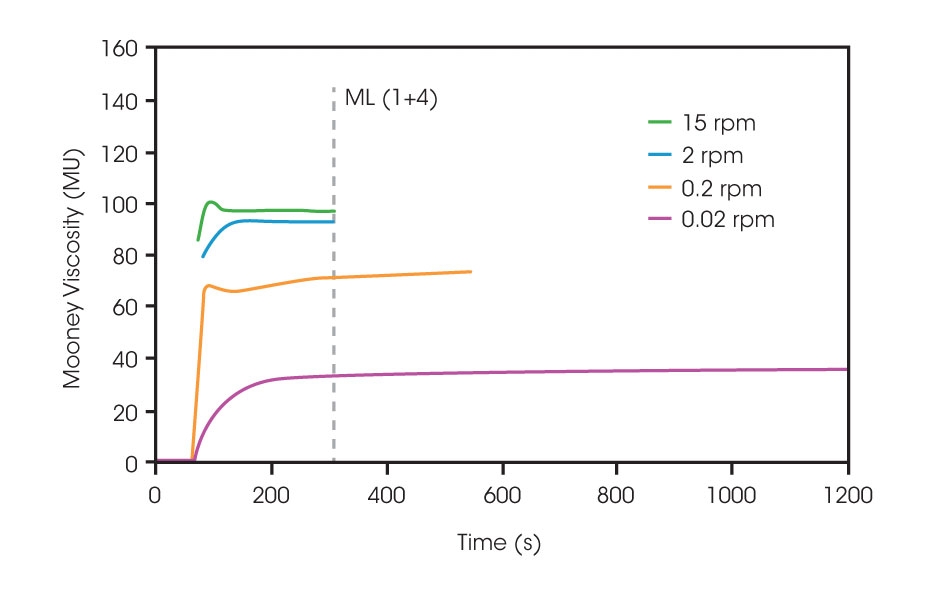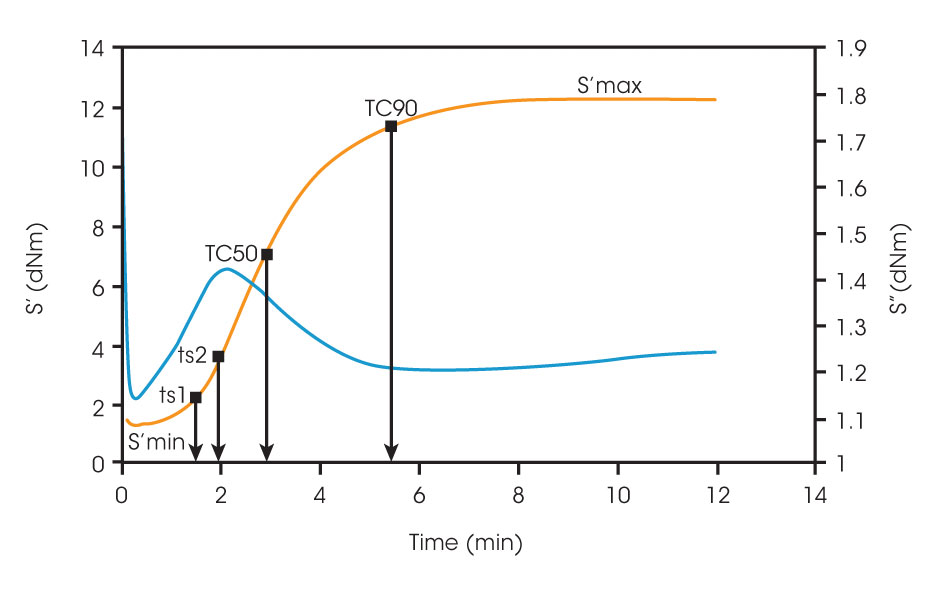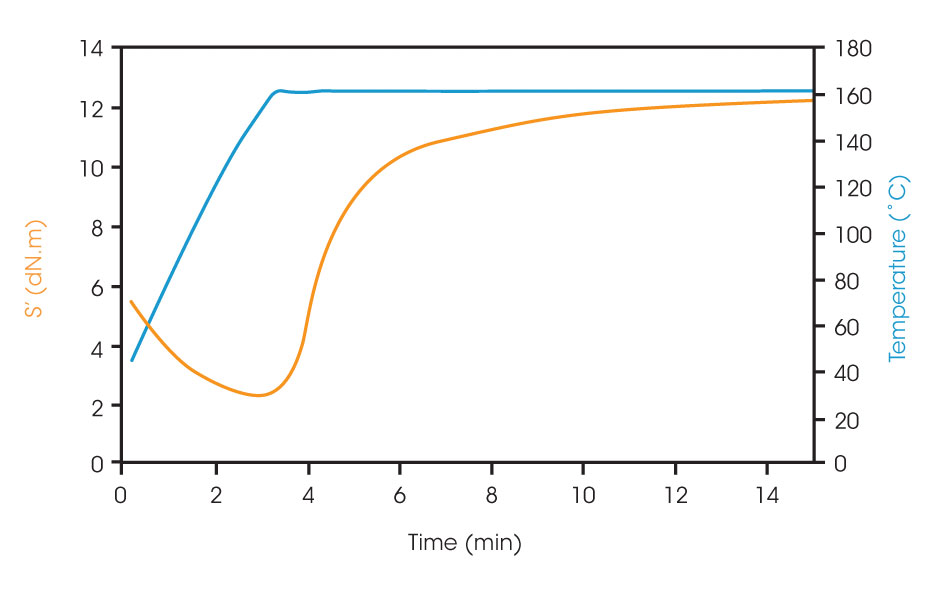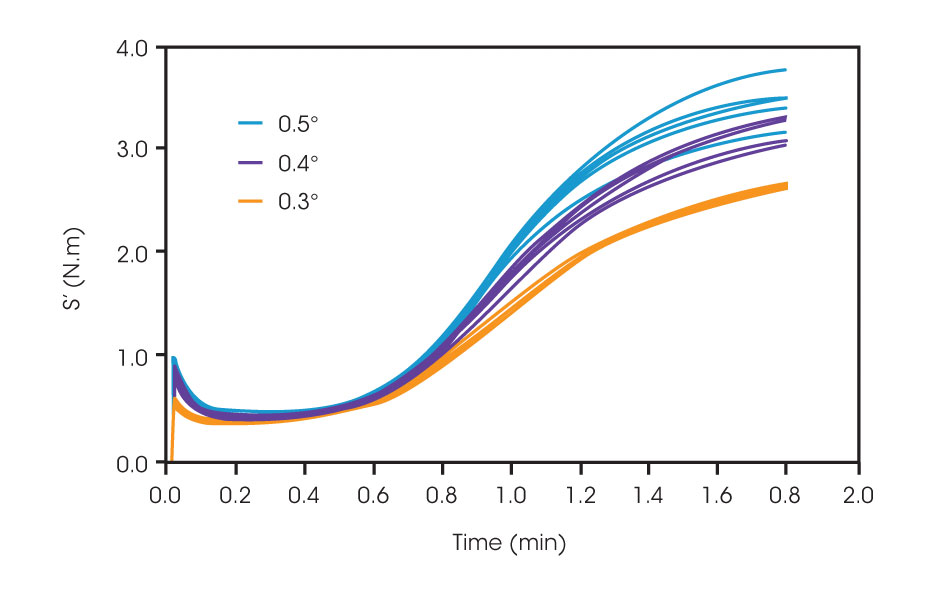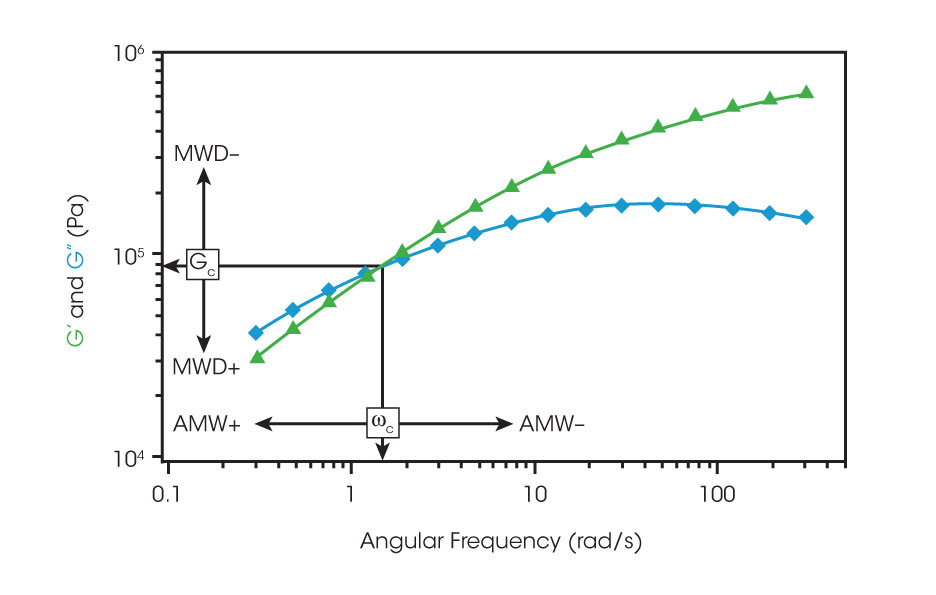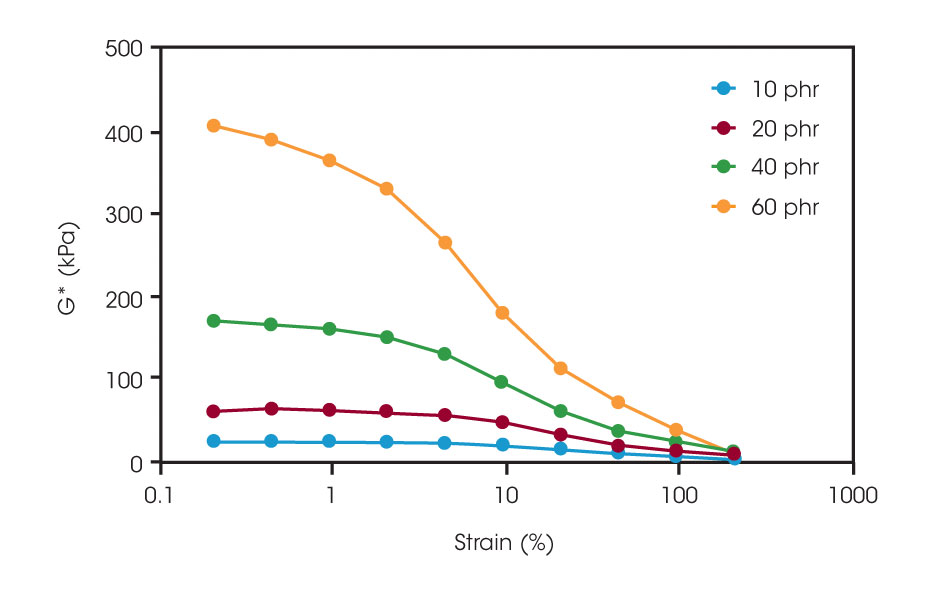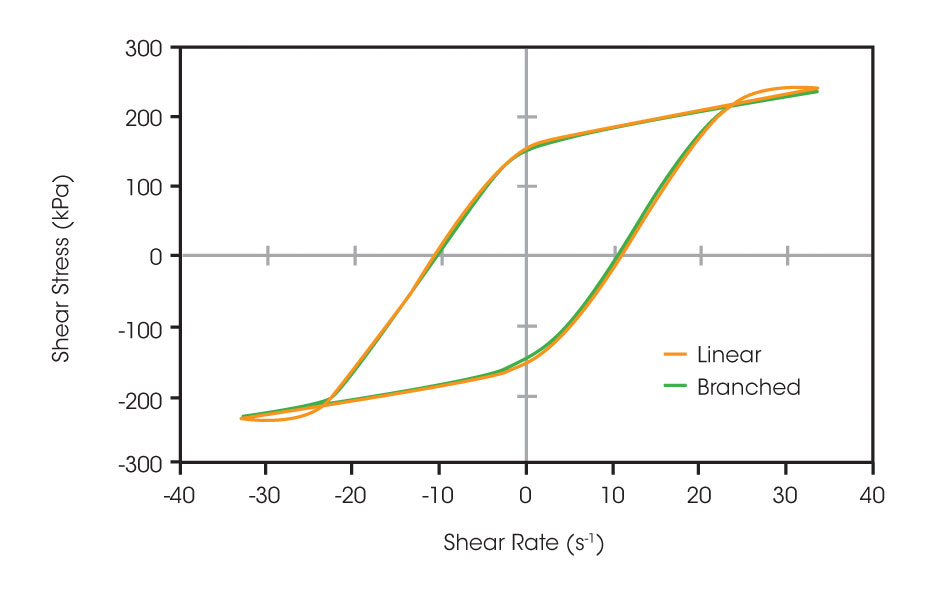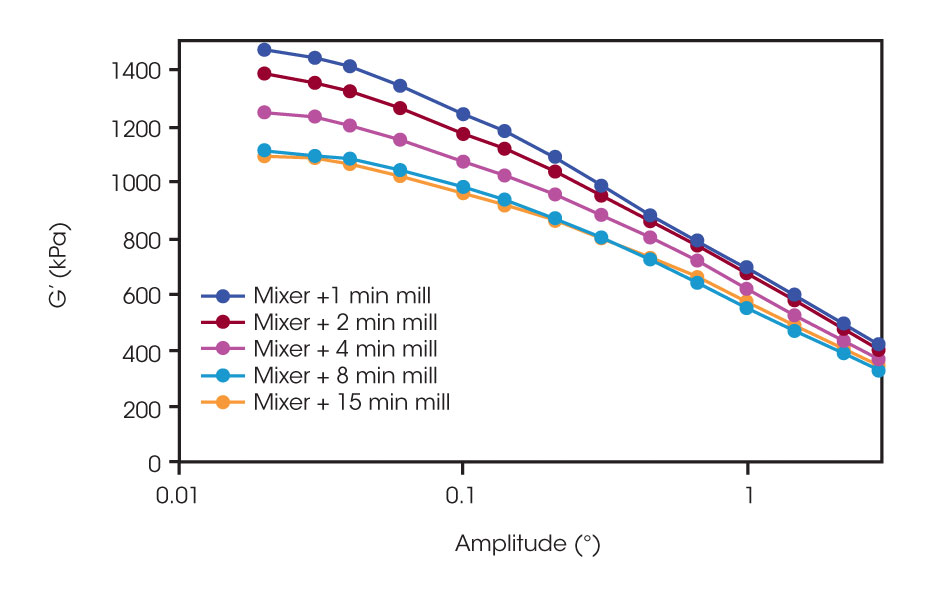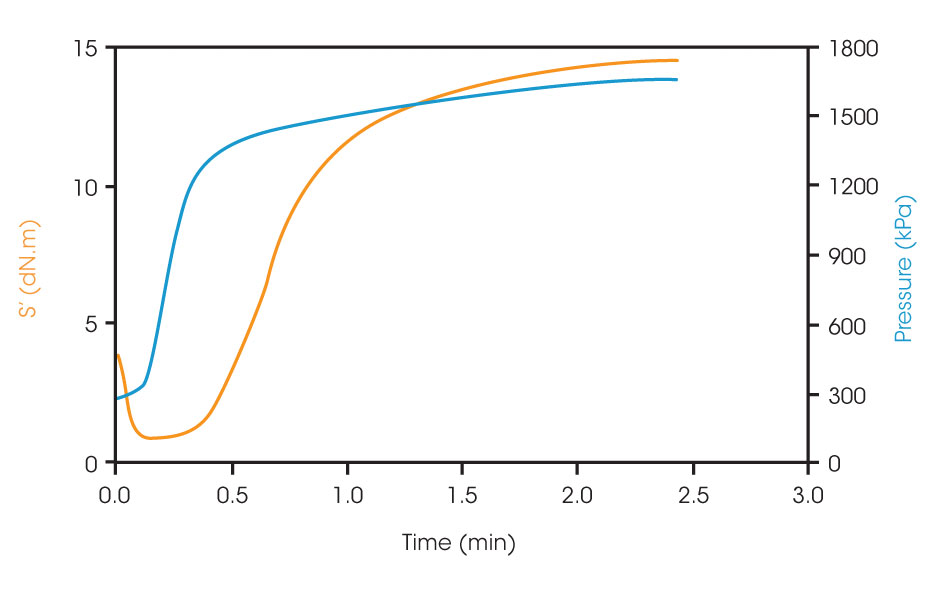Rubber Test Types
TA Instruments’ Rubber Testing Instruments perform a wide array of tests for the measurement of rheological and physical properties of polymers, rubber, and rubber compounds and all stages of manufacture. Tests of every level of complexity, from routine manufacturing control, to upstream research and development are performed with equal degrees of ease and precision.


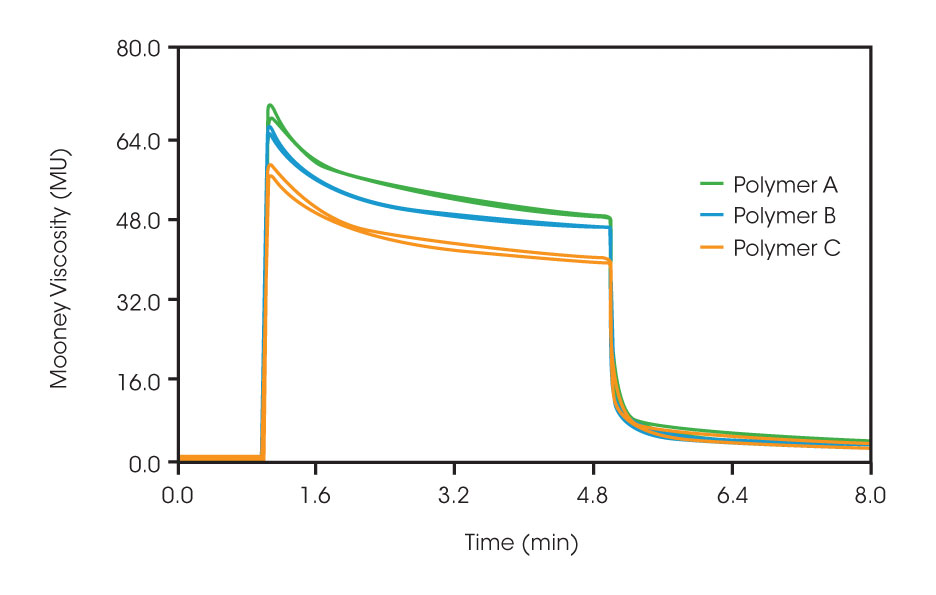
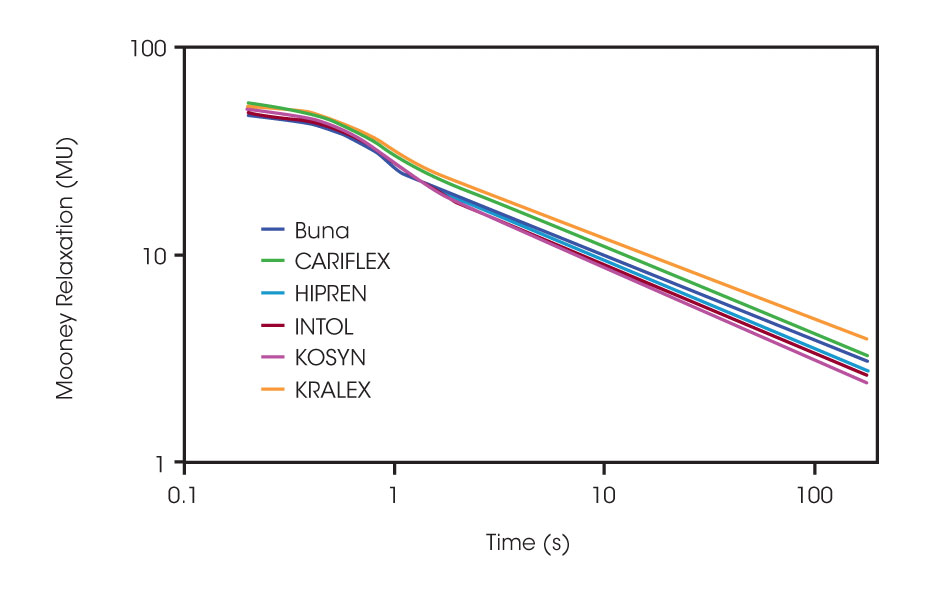
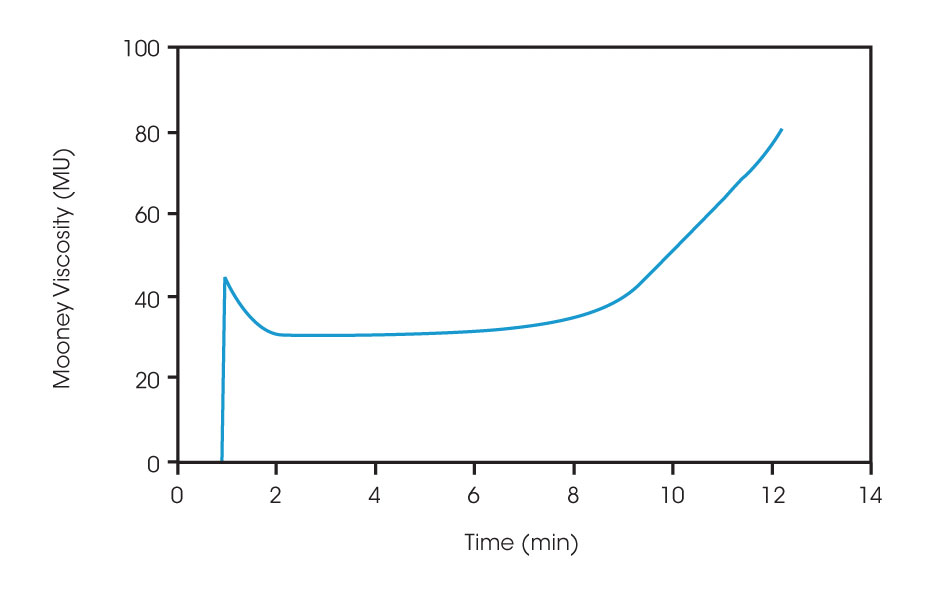 The Mooney Viscometer can also be used to measure the initial rate of vulcanization. In this example, a styrene butadiene rubber (SBR) was tested for prevulcanization characteristics at 150°C using the small rotor. For this simple experiment the initial Mooney viscosity, minimum viscosity, scorch times, and cure index are the most commonly reported values.
The Mooney Viscometer can also be used to measure the initial rate of vulcanization. In this example, a styrene butadiene rubber (SBR) was tested for prevulcanization characteristics at 150°C using the small rotor. For this simple experiment the initial Mooney viscosity, minimum viscosity, scorch times, and cure index are the most commonly reported values.